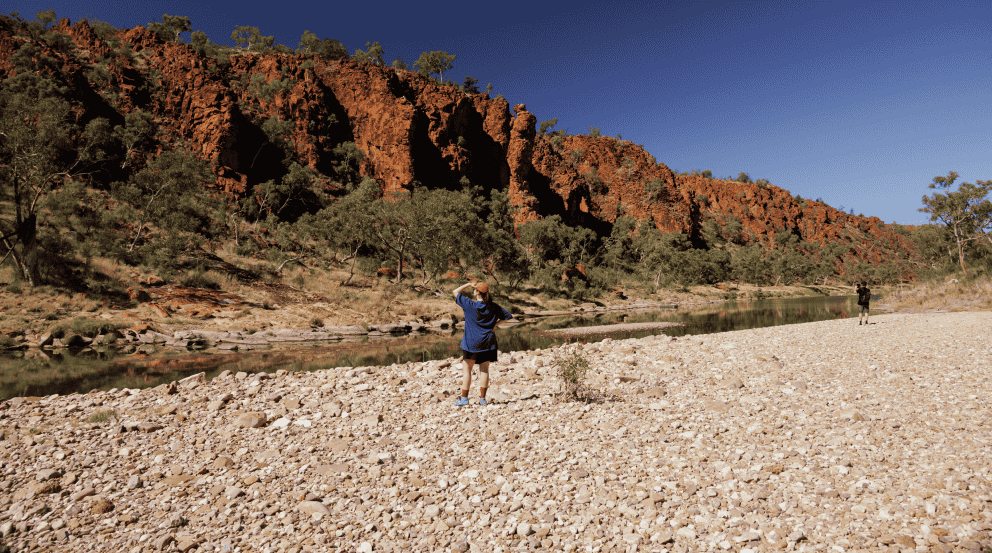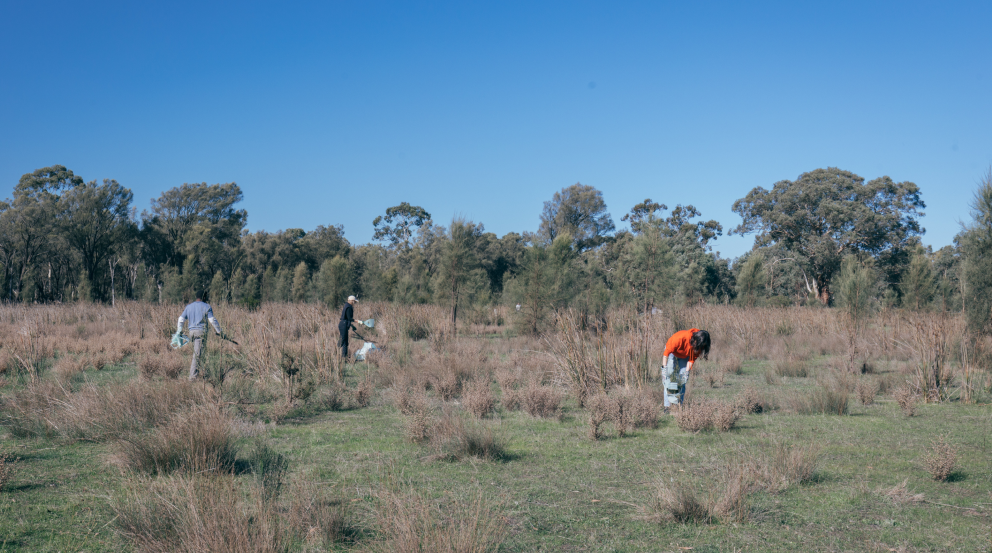While it may feel like not much happens during winter, it’s actually the perfect time to get your garden ready for the warmer months. We chatted to Dalki Garringa nursery manager, Nelly Verstoep, about why getting your hands dirty now can lead to a bumper spring crop.
When the weather cools down, there’s not much incentive for us to spend much time in the garden. In Australia’s southern states, it’s cold (and usually wet), and it can be far more tempting to stay indoors with a cuppa and a good book. But winter is an important time of year for gardens.
“This is when plants basically go to sleep,” explains Nelly Verstoep, nursery manager at Dalki Garringa Native Nursery, who supplies our stringybarks at Bank Australia’s conservation reserve. “A lot of plants become dormant, which means they slow down their growth. They’re saving their energy for a spring burst.”
Here are a few of Nelly’s tips on how to ensure flowers, fruits and buds galore come spring.
%252520(2).jpeg)
1. Give your garden a good spring clean
Winter is a perfect time for cleaning up around the garden. Nelly suggests aerating your soil, picking up any dead fruit lying around your fruit trees, and cleaning up dried leaves to use as compost.
“If you have kids, it’s a fun activity to make a big pile and then let the kids go running through them!” Nelly laughs. “But the best use of dried leaves is as a compost or mulch.” She suggests putting your leaves into the compost bin with some twigs, straw or shredded paper, and giving it a good turn “so it doesn’t go gluggy and smelly”.
2. Prune your trees and creepers
While it can feel a little ruthless, pruning your plants keeps them happy and healthy, and helps foster new growth.
“Fruit trees can be pruned at any time of year, but in winter you can give them a hard prune,” Nelly explains. “You can take them back about a third of their growth.” Cut back older branches that are rubbing against each other, and aim to keep the centre of your tree quite open. This will promote airflow, prevent disease, and will give your tree a nice shape.
3. Consider a green manure crop
Planting a green manure crop or two is a great way to get some extra nutrients into your soil. It’s particularly good if you don’t have a compost bin providing you with a steady supply of nutrient-rich organic matter. Nelly suggests throwing some lucerne and pea seeds into your garden bed, and then turning it all over when the seeds start to shoot. “Digging it in helps the nutrients break down, and you’re aerating the soil,” she says.
4. Plant fruit trees and native bush food
This is a great time of year to be planting bare-rooted fruit trees. The cool, damp soil conditions are optimal for the trees’ roots to get settled in before they start growing in spring. Native trees like eucalyptus, wattle and callistemons can also go into the ground, or a pot, during the colder months.
“At the nursery, we’re planting lots of bush foods, like Warrigal greens and Old Man Saltbush,” says Nelly.
But before you go splashing out on seeds and tubestock, it’s important to be aware of your soil condition and the microclimate in your garden. “You wouldn’t put a dry land species into a totally boggy spot,” Nelly advises. “You need to choose the appropriate plants for your site in your yard. As long as they’re in the right sort of soil with the right amount sun, the plant should be quite happy.”
.jpeg)
5. Not sure about anything? Befriend a local gardener!
Your local nursery is your best bet for exercising your green thumb this winter. Not sure how much of your apple tree to prune, what the best potting mix is, or what to plant? They’ll have the answers.
Nelly also recommends asking your neighbours for advice. “Local residents with established gardens can give you tips on local growing conditions and what plants will likely thrive in your own garden,” she says. “Sharing knowledge of plants and gardening benefits people and the environment, and you could end up making new friends along the way!”
Gardening in a small space? Check out these top tips on how to grow your own food.
%2520(1).webp)







